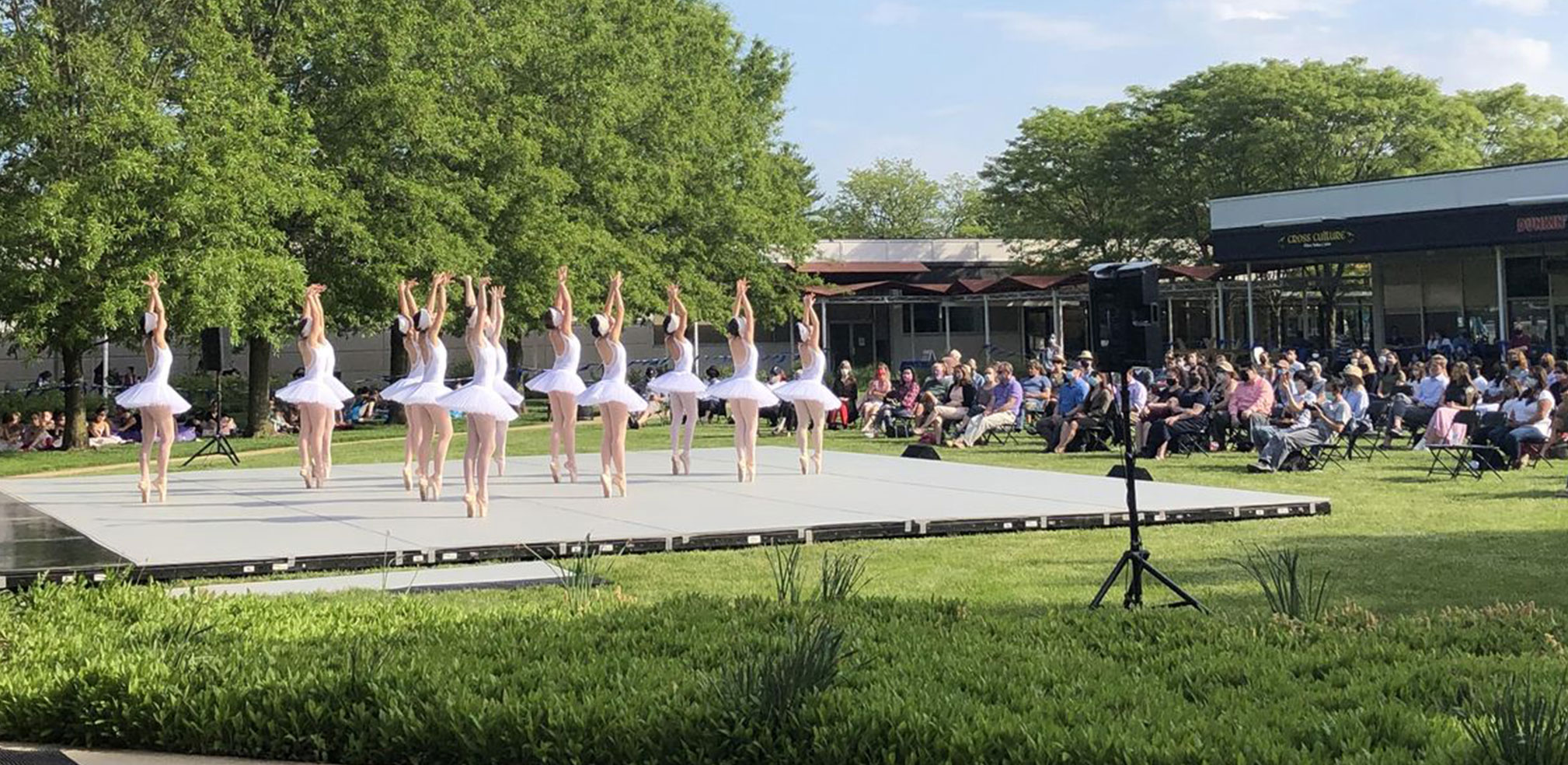What “Feeling the Floor” Really Means for Ballet Dancers
“Make sure you’re feeling the floor!” If you had a dollar for every time you’ve heard a teacher say that, you’d be able to buy a new pair of pointe shoes every single day for life. But what does it actually mean to “feel the floor” in a ballet context? Pointe asked the experts how you can get up close and personal with the floor, whether that’s onstage, at your ballet school, or in your at-home studio.
Introduce Yourself
How your dancing interacts with the floor will depend on the floor’s own qualities. As Chrissy Ott at Harlequin Floors says, “Harlequin offers several options of sprung floor systems that all differ in construction, each creating a different feel for dancers.” Classical ballet dancers, especially those on pointe, tend to prefer soft surfaces with some, but not too much, traction, like Harlequin Studio™.
Right from the start of your warm-up, pay attention to the floor’s level of grip and support. That way, you’ll know whether to put more or less force into your turns, and you’ll be able to assess how you can make movement look sharper or smoother.
Sensory Concentration
As bunheads well know, feeling the floor gets way more difficult once you strap on those boots. If you find yourself struggling to articulate through your shoes and sense the floor beneath you, try removing some or all padding within the pointe shoe or give yourself extra foot-articulation exercises to do before pointe class starts.
As you get deeper into your connection with the floor, you might even find yourself becoming more discerning about the surface you’re dancing on. As Ott says, “It’s a common misconception that a floor for sports will suit the needs of dancers.” But floors that aren’t specifically designed for dance tend to be harder and more slippery—and they don’t offer the support of purpose-built dance flooring like Harlequin’s.
Harlequin vinyl floors are “point elastic” (meaning they deflect force at the point of impact), while the sprung floors are “area elastic” (to avoid a trampoline effect). If you’re curious about how different kinds of floors feel, dancers are welcome to test out Harlequin’s various flooring types at the company’s showroom in Moorestown, New Jersey. On the other hand, if you’re feeling overwhelmed by options, Harlequin’s floor selector tool can guide you in finding your perfect (flooring) match by having you answer a few simple questions.
Style and Support
Why do teachers go on and on about feeling the floor? First, because it just looks better. The second reason ballet dancers should hone in on the floor is simple: safety. Articulating every inch of your foot on and off the floor helps prevent a host of issues.
Of course, it’s forever easier (and more fun!) when your hardworking feet can get close with dance flooring that gives love right back to them. If you’ve developed trust issues from unpredictable floor experiences in the past, it might be time to consider Harlequin. After all, as Ott says, “We recognize that dancers need to feel comfortable and safe with the floor, so they can dance with confidence. It’s always interesting talking to dancers about their experiences with various floors throughout their career. They always know when they’re not dancing on a Harlequin floor!”
Read the full article: Pointe Magazine | What “Feeling the Floor” Really Means for Ballet Dancers
